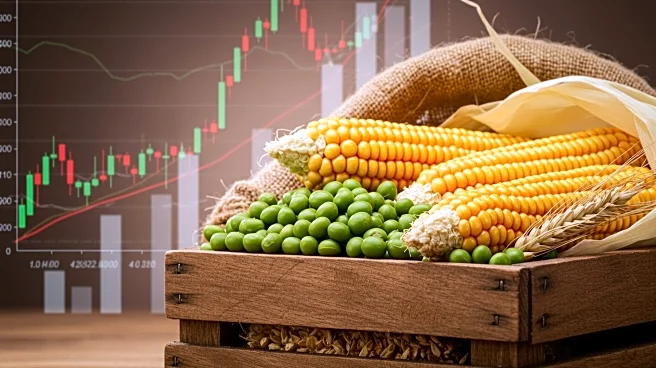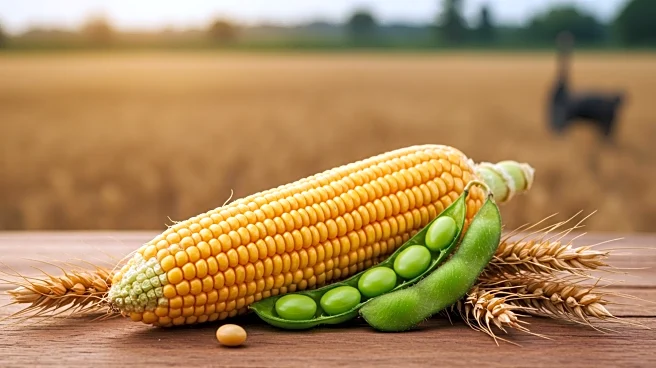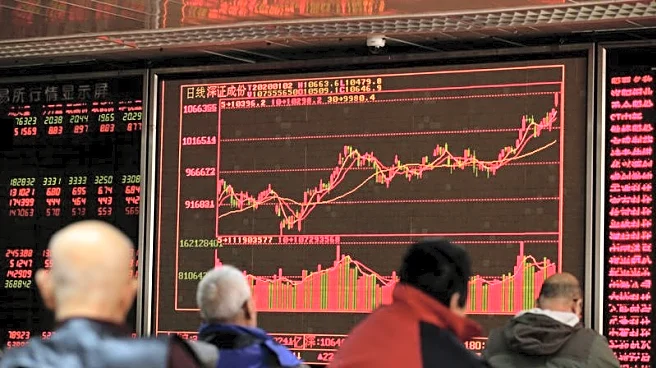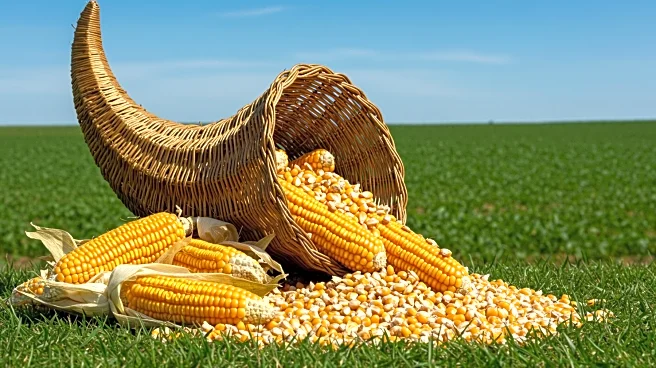What's Happening?
The USDA has reported a rise in corn futures due to increased demand for U.S. grain, with South Korea purchasing 136,000 metric tons for the 2025/2026 marketing year. Spain also bought 132,000 tons, while Mexico's earlier purchase of 315,488 tons underpins prices. Corn shipments have reached 64.4 million metric tons, a 27% increase from the previous year. Soybean exports are up 13%, totaling 48.4 million metric tons. Despite these gains, corn prices are capped following the USDA's forecast of record production at 16.742 billion bushels. Soybean prices rose on technical buying, though supply and demand fundamentals remain bearish.
Why It's Important?
The increase in corn and soybean exports highlights strong international demand for U.S. agricultural products, which is crucial for the country's farming sector. The rise in futures prices reflects positive market sentiment, potentially benefiting U.S. farmers through higher revenues. However, the USDA's forecast of record production could lead to oversupply, affecting prices negatively. The robust export figures indicate a competitive edge for U.S. agriculture in global markets, supporting economic growth and stability in the sector. The dynamics of supply and demand will continue to influence market conditions and pricing strategies.
What's Next?
As the 2025/2026 marketing year approaches, stakeholders can expect continued monitoring of export trends and production forecasts. The USDA's record production forecast may prompt strategic adjustments in pricing and inventory management. International buyers may continue to seek U.S. grain, influencing future export volumes and market dynamics. The impact of weather conditions and geopolitical factors on agricultural trade will be closely watched, potentially affecting future demand and pricing. Farmers and traders will need to adapt to evolving market conditions to optimize their operations and profitability.
Beyond the Headlines
The fluctuations in corn and soybean futures and exports underscore the complex interplay between global demand, production forecasts, and market sentiment. The potential oversupply scenario raises questions about sustainable farming practices and resource management. As international demand remains strong, U.S. agriculture must balance production efficiency with environmental considerations. The role of technology in enhancing yield predictions and market analysis will be crucial in navigating these challenges, ensuring long-term sustainability and competitiveness in the global market.












